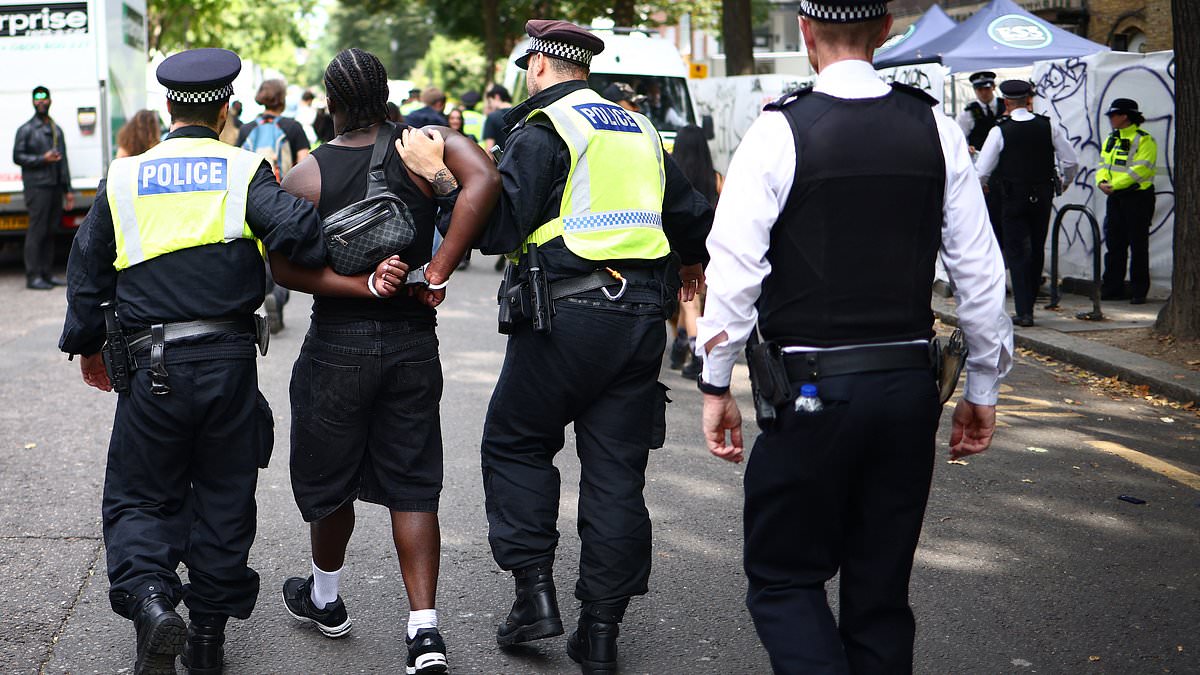St John Ambulance will teach 50,000 people how to treat severe bleeds after a surge in knife crime fuelled demand for lessons.
The public will be able to attend classes nationwide throughout September, when the charity will demonstrate life-saving first aid.
It said the focus will be on severe bleeding ‘as the issue of street violence is of growing concern to the public’.
Two-thirds (66 per cent) of 1,000 people polled for the SJA said it should feature severe bleeds due to the rise in knife crime, with 59 per cent saying they would not know how to help a victim.
Other things respondents most want to learn is how to deal with choking and cardiac arrests, which will both be included in the tutorials.
The announcement comes after the Metropolitan Police revealed there were eight stabbings at the Notting Hill Carnival over the August bank holiday weekend alone, with some victims in a critical condition.
Weeks earlier, a knife attack at a Taylor Swift-themed dance workshop in Southport on July 29 left three young girls dead and several more adults and children injured.
There were 50,510 ‘knife-enabled crimes’ in England and Wales in the year to March, which was up 4 per cent on the previous year, according to the Office for National Statistics.
A notable increase was seen in the number of robberies involving a knife or sharp instrument, which were up 13 per cent in a year.
The figures for both years exclude Greater Manchester, because of an IT issue, the ONS said.
The skills will be taught through public events, online tutorials and free first-aid pocket guides, as part of SJA’s Save a Life campaign.
Carl Makins, head of community education at SJA, said: ‘This September we plan to show thousands of members of the public how to save lives, focusing on the first aid that they most want to learn.
‘It’s vital more of us within our communities know how to respond to the life-threatening situations which many of us will sadly face in our lives.
‘Tragically, due to the rise in knife crime, it feels particularly relevant to be teaching people how to treat severe blood loss.
‘It’s so often those quick actions taken by people who find themselves first on scene in the critical minutes before an ambulance arrives, that make the difference between life and death.’
The research also found more than a quarter (26 per cent) of people have never learned any first aid and less than four in ten (38 per cent) said they would know how to treat a serious bleed from an injury or wound.
Nearly half (49 per cent) said they would feel panicked if they came across a health emergency due to their lack of training.
This was despite nearly three in ten (28 per cent) saying they had experienced a severe bleed incident, either as a first aider (11 per cent), casualty (9 per cent) or bystander (8 per cent).
While half (50 per cent) went on to correctly state they would prioritise putting pressure on a wound to stem life-threatening blood loss, others wrongly focused on raising the injured limb, placing the person in the recovery position, attempting to clean the wound or tilting the casualty’s head back.
A third (33 per cent) believed, incorrectly, that you should never cover an open wound with worn clothes to stem a bleed – despite this sometimes being the only option to save someone’s life.
SJA first aid trainer Kristina Saunders used tea towels to stop a teenager bleeding to death when he was stabbed in the side and leg in an East London housing estate.
When Kristina, 27 at the time, heard a knock at the door and cries of, ‘There’s so much blood!’ from another teenager, she put her skills into action.
Without access to a first aid kit, she improvised with a pair of Marigold gloves to protect herself and tea towels to stem the blood until police and paramedics arrived.
The boy, aged only 14 or 15, survived after surgery. Paramedics and police said Kristina’s actions had saved his life.
Kristina said: ‘When I saw the blood I just clicked into operation… I went into a different mode, thinking, ‘I have got to help this kid out. If I don’t, he’s going to die.’
‘If I hadn’t been there, I don’t know what would have happened but too many people still don’t know the basics, simple things like putting pressure on a wound or CPR.
